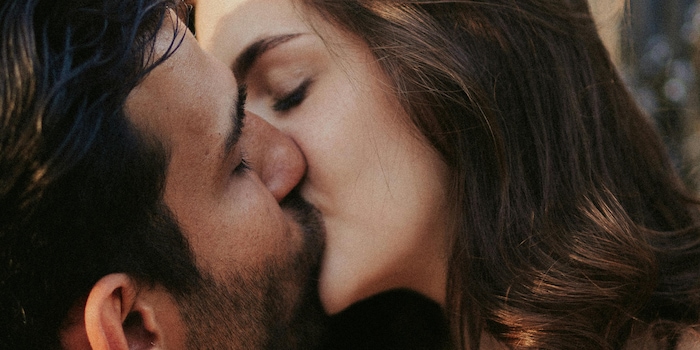
News + Trends
Do you speak several languages? Then I have good news for you
by Anna Sandner

Why do we kiss even though it's risky? A look at 21 million years of kissing evolution shows: The intimate gesture is ancient. Our ape ancestors and Neanderthals were already smooching - and not just among themselves.
Kissing is probably one of the most beautiful trivialities in the world. But is it really just a nice gesture? A new study from Oxford University suggests so: Kissing is pretty darn old - it originated around 16.9 to 21.5 million years ago. At that time, this behaviour developed in the common ancestor of all great apes. And because kissing has persisted for millions of years, it is highly likely that Neanderthals also kissed - possibly even with us modern humans when our paths crossed around 50,000 to 40,000 years ago.
A kiss is an ancient behaviour.
Researchers led by evolutionary biologist Matilda Brindle have developed a fairly precise definition:
A kiss is a non-aggressive, purposeful mouth-to-mouth contact within the same species in which the lips move and no food is passed.
This excludes, for example, orangutan mothers shoving pre-chewed food into their babies' mouths (premastication) - this is not kissing. The researchers used this definition to scrutinise primates. Kissing has been observed in most great apes - chimpanzees, bonobos, orangutans and, of course, us humans.
The researchers used phylogenetic methods - i.e. reconstruction methods that link the primate family tree with the kissing behaviour of species living today - to estimate how likely it is that common ancestors kissed. To do this, they used a so-called Bayesian phylogenetic model, which ran through different evolutionary scenarios in a total of ten million simulation runs.
The result: kissing developed around 21.5 to 16.9 million years ago in the common ancestor of the great apes - long before Neanderthals or modern humans even existed. Because kissing was therefore already present in this ancestor, it stands to reason that the behaviour was passed on to all subsequent lineages - including those from which Neanderthals and modern humans later emerged.
This is the first time anyone has studied kissing from a broad evolutionary perspective.
«Our findings add to a growing body of work highlighting the remarkable diversity of sexual behaviour in our primate relatives.», explains study author Dr Matilda Brindle.
An earlier study showed that modern humans and Neanderthals shared oral microbes (more precisely: Methanobrevibacter oralis). When the researchers compared the genetic material of the M. oralis strains from Neanderthal tartar with that of modern humans, they were able to calculate when the two microbial lineages last had a common ancestor: around 112,000 to 143,000 years ago - long after the split of Neanderthals and Homo sapiens.
For one and the same mouth-dweller to be so closely related in two already separate human species, it must have repeatedly switched from one to the other even after the two species split - with saliva and other oral fluids.
How exactly remains an open question: by eating together, premastication - or by kissing.
This is where the Oxford study comes in: Using a statistical model, the team estimates that Neanderthals kissed with a probability of 84.3 per cent.
Together with the microbiome data and the fact that humans and Neanderthals mated around 50,000 to 40,000 years ago, the conclusion is obvious: [[pullquote:Yes, humans and Neanderthals probably kissed too.]]
From an evolutionary perspective, kissing is a puzzle: it has no obvious survival advantage, but carries the risk of transmitting diseases. Several hypotheses explain why kissing prevailed. When we kiss, we unconsciously gather information about each other's health and genetic compatibility through our smell and taste. It's like a chemistry check in real time. Kissing also serves the purpose of social bonding and requires trust. In chimpanzees, it is used for reconciliation after conflicts.
One thing is clear: kissing is not a modern invention, but an ancient behaviour with deep evolutionary roots. Perhaps this is why it has survived for millions of years - because it releases oxytocin, promotes trust and strengthens bonds that were just as important for our ancestors as they are for us today.
Science editor and biologist. I love animals and am fascinated by plants, their abilities and everything you can do with them. That's why my favourite place is always the outdoors - somewhere in nature, preferably in my wild garden.
From the latest iPhone to the return of 80s fashion. The editorial team will help you make sense of it all.
Show all